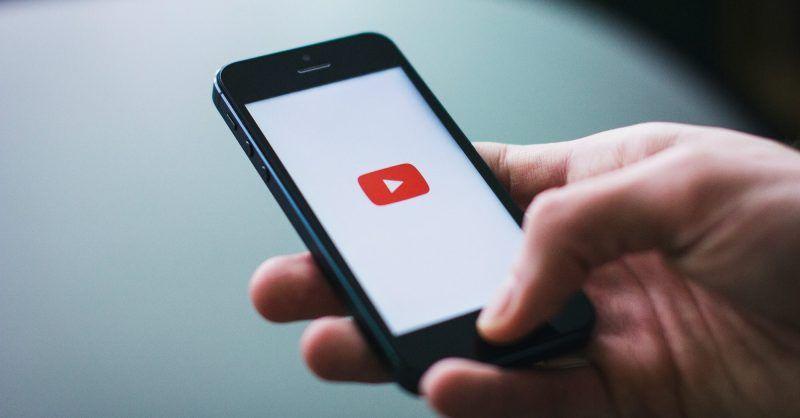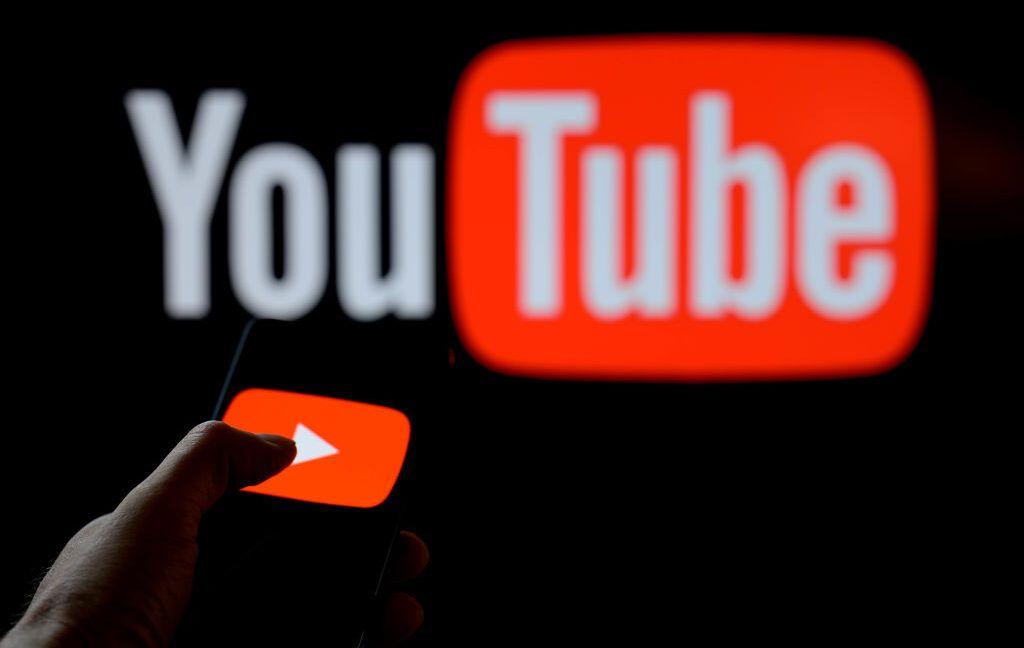YouTube's AI Age Verification System Launches Second Wave, Sparking User Privacy Concerns
4 Sources
4 Sources
[1]
YouTube age verification AI is flagging adults as children (again)
YouTube is unleashing a second wave of age-gating restrictions, and it is seriously angering some adult users on the platform. For those unaware, the streaming giant's AI-powered age-detection system launched in the US earlier this summer, but it wasn't until September that the system started flagging users en masse. The fact that YouTube wants to prevent young users from accessing adult material on the platform isn't really the problem here -- rather, YouTube should be commended for the effort. The problem is that the platform is, by mistake or not, flagging adult users as underaged ones. Those spared in the first wave, however, shouldn't breathe a sigh of relief just yet. The streaming giant is now unleashing a second wave of restrictions, and arguably, it is more aggressive than before. Reports about the second wave of flagging have made their way to Reddit, with numerous users indicating that they've been falsely classified as minors. ID or limits What will you choose? "We've changed some of your settings. We couldn't verify that you're an adult," reads one of the prompts YouTube is sending to users. "Take a few minutes to verify your age. To view this video, please provide more info so we can be sure you're an adult," reads a different one. Elsewhere, users have also pointed out that the AI tool flagging underage accounts is clearly making false assumptions. An 18-year-old user said "my parents made it (the YouTube account in question) when I was born. How the hell is my account flagged for being a 'minor,' despite it being 18 years old." A different user added, "So today I got one of my other channels flagged as under 18 (Even though I'm literally 21) and the thing that confuses me is that first of all I have NOT used this channel since March." Those incorrectly flagged are now in a dilemma. They must either accept drastic content-viewing limitations and restrictions, or submit personal data/identification to prove that they're over 18. Alternatively, creating a new YouTube account might be the only way to continue watching content in an unrestricted manner without handing over personal information. In addition to restricted access to content, accounts classified as underage also have other "protections" automatically applied. These include: * Only non-personalized ads. * Enabling digital wellbeing tools by default. * Frequent reminders about privacy when uploading a video or commenting publicly. * Minimizing recommendations of videos with content that could be problematic if viewed in repetition. Has your YouTube account been flagged by the second wave of the streaming giant's AI age audit? Let us know in the comments below.
[2]
YouTube rolls out AI age verification to a new wave of users
After launching the feature earlier this year, YouTube has unleashed a new wave of AI age verification on the platform, angering some. YouTube first announced AI age verification back in July of this year, noting that it would start implementing checks in August. It wasn't until late September, though, that the first wave of users actually started getting hit with AI-based age restrictions on content. Now, another wave has hit. Over the past 24 hours, a number of YouTube users on Reddit have reported that their accounts have been restricted under YouTube's AI age verification. As was the case last time around, users can just accept the restrictions, or verify that they are over the age of 18 by using an official ID, taking a selfie that is then used to estimate your age, or using a credit card. As a reminder, YouTube's restrictions for accounts deemed to be under the age of 18 include:
[3]
YouTube's AI-powered age verification is back -- here's what that means for you
AI-age verification is undoubtedly annoying, especially when it decides we're lying about our age. Unfortunately, YouTube's version is back and is once again causing issues. YouTube first announced that it would be introducing an AI-backed verification system in July. However, we started to see users complain about the feature in September. It looks like some of the issues with the AI falsely restricting certain channels are still a factor. We have seen several Reddit posts complaining about their accounts being restricted recently. One user, TREXIBALL, complained that the AI had flagged their account as soon as they turned 18. Another user, bobbahuey, noted that they had been using their account for 10+ years, but had only recently been asked to verify they were an adult. On one hand, there's an argument that it's easy to solve the problem by simply verifying your age. However, considering YouTube's recent history, users may be cautious about supplying personal information. You can use the selfie feature, but that doesn't always work for everyone. If your account is restricted, then the most noticeable issue is that you'll be blocked from viewing age-restricted content. On top of that, any advertisements you see will be non-personalized. While YouTube's ads are certainly a pain, it's seemingly worse when they have nothing to do with you. Not only that, YouTube will also minimize any recommendations with content that could be problematic if viewed multiple times. On top of that, YouTube will activate its digital well-being tools by default, including reminders to take a break, as well as bedtime reminders. YouTube will also show reminders about privacy when users try to upload any new content. The content that you do upload will also be set to private by default, and the ability to earn from gifts on vertical live streams will be heavily restricted. Let us know if you've found that your account has been age-restricted and what you have done to solve the problem.
[4]
YouTube's AI age checks hit more users, and your selfie may decide
The rollout widens with three ways to verify if you want full access to 18+ content: ID, selfie, or credit card. What's happened? YouTube has pushed a fresh wave of AI age verification prompts to more accounts. It announced the system in July and began limited rollout in late September, with the latest expansion landing now. According to 9to5Google, users over the past 24 hours are seeing prompts to accept limits or prove they are 18 using an ID, a selfie age estimate, or a credit card. Users reported on Reddit that previously unaffected accounts are now flagged across the app and the web. Other platforms face similar moves. Short timeline is it was announced in July, first wave in late September, expansion this week. Skip verification and YouTube applies tighter defaults, blocked age-restricted videos, non-personalized ads, break and bedtime reminders on, privacy nudges before uploads and public comments, fewer binge-prone recommendations, uploads set to private by default, and restricted ability to earn gifts on vertical live streams. This is important because: The prompts force a choice that changes your experience. You can restore full access by proving you are 18, or keep the limits and accept a narrower version of YouTube. Privacy trade-offs are front and center, with ID, selfie, or card checks and open questions about data retention. Keep the limits, and what you watch and publish tightens, especially around age-gated videos and visibility. No verification, fewer features. Creators feel that in reduced reach and potential revenue. Recommended Videos Why should I care? This affects adults who simply have not verified, not just teens. It also reshapes how creators plan uploads and live interaction. You might open YouTube to find some videos unavailable, lighter recommendations, and break or bedtime reminders switched on until you verify. Verification adds a hoop to jump through, especially if you are reluctant to share an ID or a selfie. Creators may see fewer public uploads from younger audiences and quieter gifting on vertical live streams. Okay, so what's next? Expect the checks to keep expanding as YouTube tunes accuracy and user flows. You can take a few steps right now. Decide first, keep the limits or restore access by using one of YouTube's verification methods. After you act, review privacy and ad settings, a good moment to tighten data sharing. Creators should confirm default visibility and live settings, then adjust workflows or scheduling if needed. Watch for Google to clarify how long selfie and ID data is retained and when it is deleted.
Share
Share
Copy Link
YouTube's AI-powered age verification system has rolled out a second wave of restrictions, incorrectly flagging adult users as minors and forcing them to choose between content limitations or sharing personal identification data.
YouTube Expands AI Age Verification with Second Wave of Restrictions
YouTube has launched a second wave of its AI-powered age verification system, affecting a broader range of users and sparking renewed concerns about accuracy and privacy. The streaming platform first announced the feature in July 2024, with initial implementation beginning in August and the first significant wave of restrictions hitting users in late September
1
2
.
Source: Digital Trends
The latest expansion has prompted numerous complaints from users who report being incorrectly classified as minors despite being adults. Reports on Reddit indicate that the system is flagging accounts that have been active for over a decade, with some users expressing frustration at being asked to verify their age on accounts created years ago
3
.False Positives Create User Frustration
The AI system's accuracy issues have become a significant source of user complaints. One 18-year-old user reported that their account, created at birth and therefore 18 years old, was flagged as belonging to a minor. Another user noted being flagged despite being 21 years old and not having used the affected channel since March
1
.
Source: 9to5Google
These false positives place users in a difficult position: they must either accept substantial content restrictions or provide personal identification to prove their age. The verification process offers three options: uploading an official ID, taking a selfie for AI age estimation, or using a credit card
4
.Comprehensive Restrictions for Flagged Accounts
Accounts classified as underage face multiple limitations designed to protect minors online. These restrictions include blocked access to age-restricted content, non-personalized advertisements, and automatic activation of digital wellbeing tools such as break and bedtime reminders
3
.Additionally, the platform minimizes recommendations for content that could be problematic if viewed repeatedly and provides frequent privacy reminders when users attempt to upload videos or comment publicly. Content uploads are automatically set to private by default, and the ability to earn from gifts on vertical live streams becomes heavily restricted
4
.Related Stories
Privacy Concerns and Data Retention Questions
The verification requirements have raised significant privacy concerns among users, particularly given YouTube's recent history with data handling. While the selfie verification option may seem less invasive than providing official identification, questions remain about how long this biometric and personal data will be retained and when it will be deleted
4
.Users who choose not to verify face a fundamentally different YouTube experience, with reduced functionality affecting both content consumption and creation capabilities. For content creators, these restrictions can impact reach and potential revenue, as younger audiences may have limited ability to engage with their content
4
.References
Summarized by
Navi
[1]
[4]
Related Stories
YouTube's AI Age Verification Sparks Privacy Concerns and User Backlash
08 Aug 2025•Technology

Google Rolls Out AI-Powered Age Estimation Technology Across Its Platforms
30 Jul 2025•Technology

Google Expands AI-Powered Age Verification from YouTube to Search, Raising Privacy Concerns
15 Aug 2025•Technology

Recent Highlights
1
Google launches Gemini 3 Flash as default AI model, delivering speed with Pro-grade reasoning
Technology

2
OpenAI launches GPT Image 1.5 as AI image generator war with Google intensifies
Technology

3
OpenAI launches ChatGPT app store, opening doors for third-party developers to build AI-powered apps
Technology




